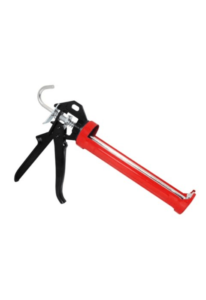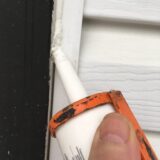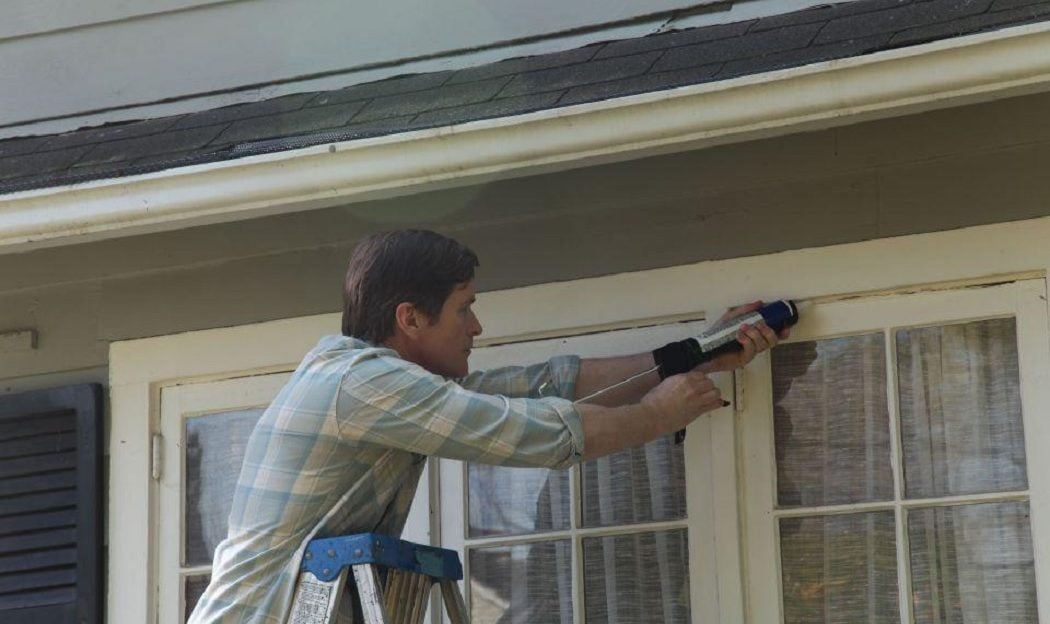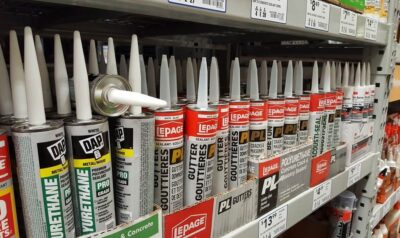 Caulking windows and doors keeps moisture on the outside of your home rather than letting it seep into cracks and crannies where it can cause mould and rot.
Caulking windows and doors keeps moisture on the outside of your home rather than letting it seep into cracks and crannies where it can cause mould and rot.
Caulking also reduces drafts, helping you keep your energy bills under control and your home more comfortable.
Best of all, it’s a DIY skill that can be acquired with a little practice. When done properly, it also looks great.
What you’ll need

- A caulking gun (buy a good one, and it will not only be easier to use but also last for decades)
- A putty knife
- A sharp knife for slicing off the tip of the caulk tube and a long nail or 7-inch piece of coat hanger to puncture the tube’s seal (some guns have built-in tip cutters and seal-puncture rods)
- An old spoon or flat piece of wood for smoothing the applied caulk
- Caulk (silicone works best around windows and doors, although some folks prefer polyurethane for its sheer stickiness; avoid cheap caulk and check the tube carefully for uses, coverage rate and paintability)
- Rubbing alcohol to clean the surface; soap and water to help smooth the bead of caulking; and mineral spirits to clean up if you’re using silicone caulk
Caulk is best applied in warm weather, but you’ll be fine if you follow the temperature guide on the tube. Read these handy tips for working in cooler temperatures.
Start by inspecting the exterior of all your doors and windows. If there’s missing caulk or if there are gaps, it’s time to replace it. Got an extra-wide gap? Home improvement expert and regular All Things Home columnist Steve Maxwell tells you how to solve that problem.
While you’re at it, check the caulking around dryer vents, exterior electrical outlets and other openings.
A putty knife or other sharp tool and a bit of elbow grease will remove the old caulk. Clean the surface with rubbing alcohol and allow it to dry for an hour or so before going to the next step.
Caulking windows and doors
Once you’ve popped the tube into the gun, slice off the tip of the tube so the hole is about ¼ of an inch. Most people slice at an angle, but others prefer a straight-across cut.
 Hold the gun at a consistent 45-degree angle, start at the top or bottom, and squeeze the trigger to force the caulk into the gap.
Hold the gun at a consistent 45-degree angle, start at the top or bottom, and squeeze the trigger to force the caulk into the gap.
Caulk in a single, continuous stream and avoid stops and starts. This takes a bit of practice.
Make sure the caulk entirely penetrates the gap and that it sticks to both sides of the opening.
Release the trigger before pulling the gun away to avoid applying too much caulk.
For a super-smooth finish, dip the handle end of the spoon, piece of wood or even your finger in warm water and soap and then smooth out your bead.
Pop a nail into the end of the tube and cover the tip in plastic wrap to keep the caulk fresh, and you’re done.
Want to learn about caulking windows and doors in an entertaining video?
More tips on reducing air leaks here.
Originally published Nov. 9, 2018.
Got a maintenance task you’re not sure how to do?
Drop us a line at info@allthingshome.ca or message us through Facebook.



